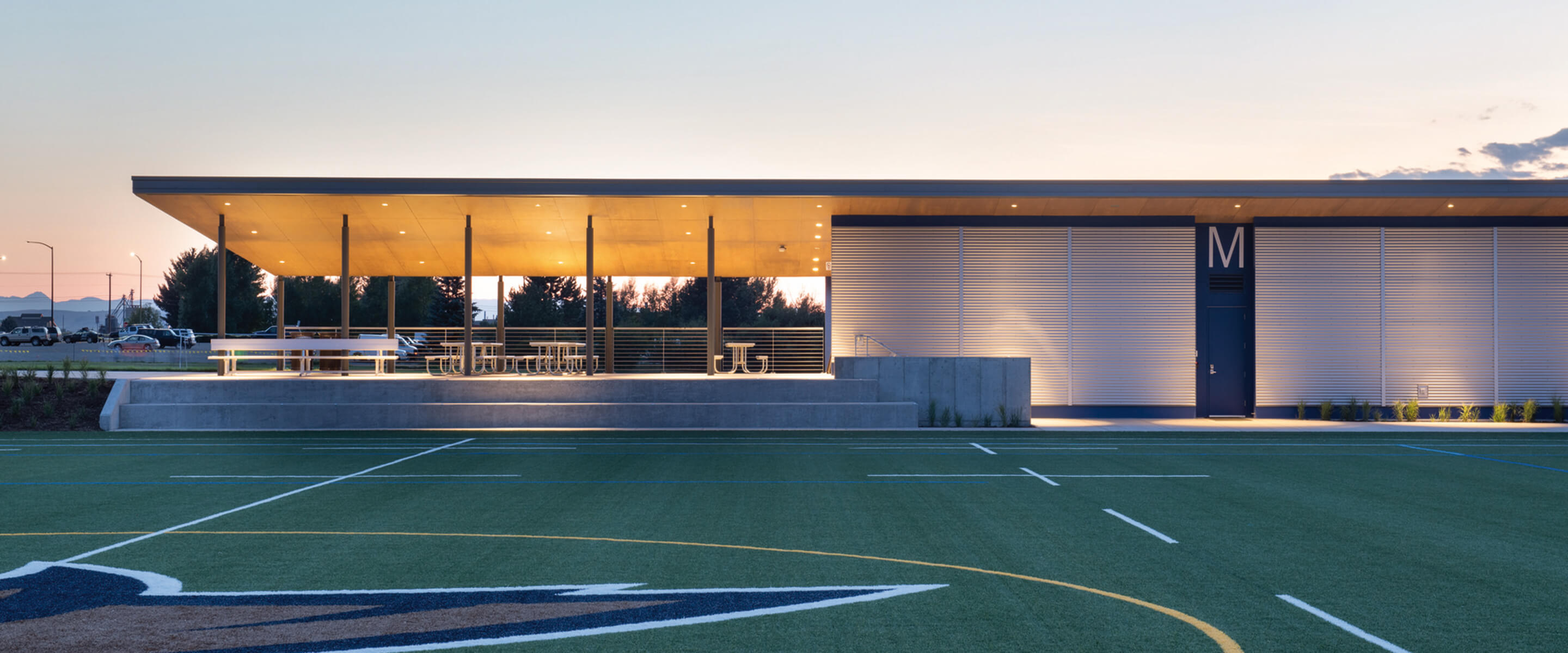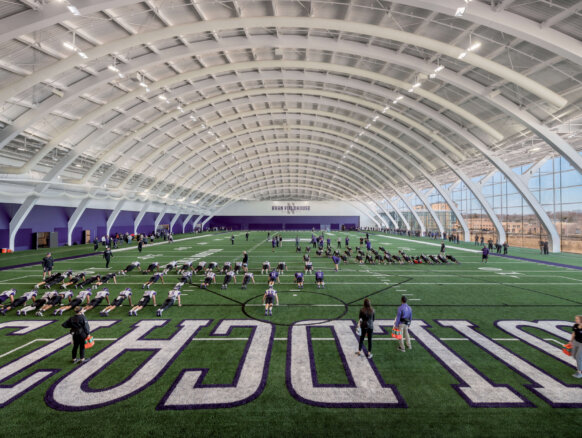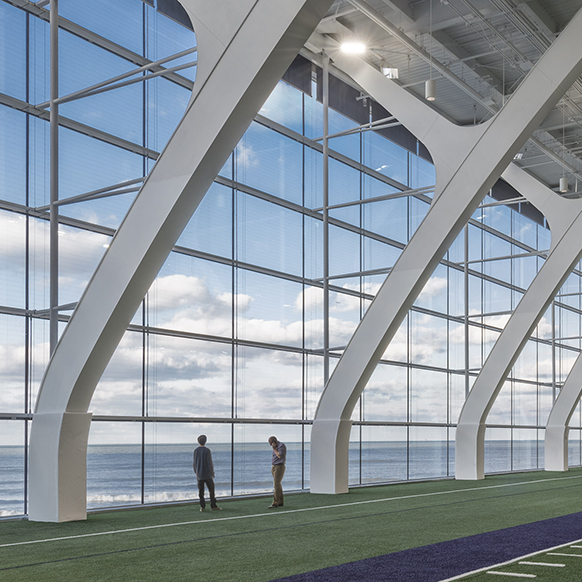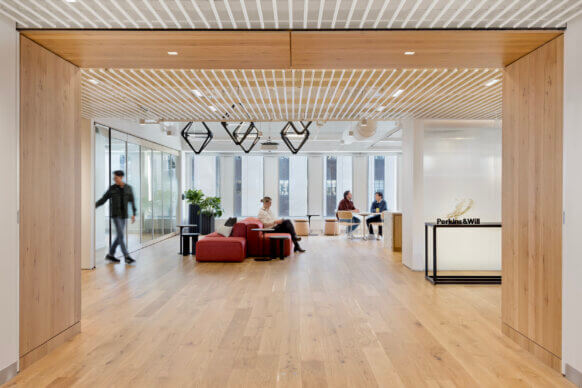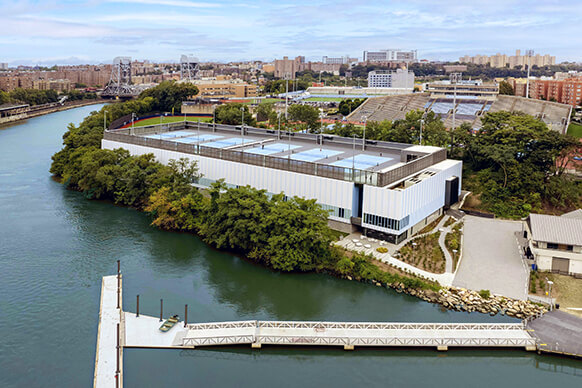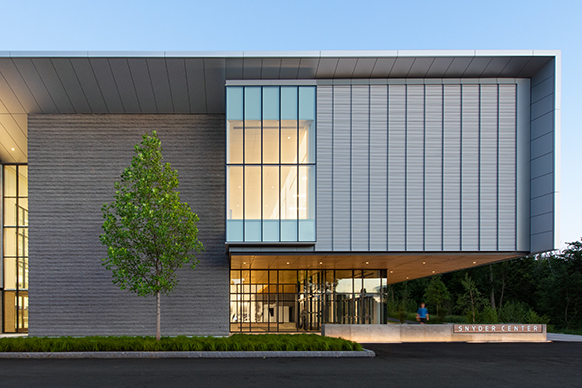
Montana State University, Lambert Field
Lambert Field creates a destination that encourages personal development, enhances the athletic excellence, and enriches the well-being of the entire University community. The new athletic and recreation field complex provides central and convenient amenity access for both varsity and recreational student-athletes. Sized for multiple NCAA regulation sports and designed for year-round public use, the facility provides valuable space for outdoor activities. The venue has allowed the University to host larger tournaments, increase exposure to more competitive teams, and boost program recruitment efforts.
Set to the south of downtown Bozeman with views to the Bridger Mountain Range, the signature pavilion becomes a landscape feature, taking cues from regional agrarian typologies. Interplay between the structure’s natural and man-made materials crafts a uniquely contextual site response.
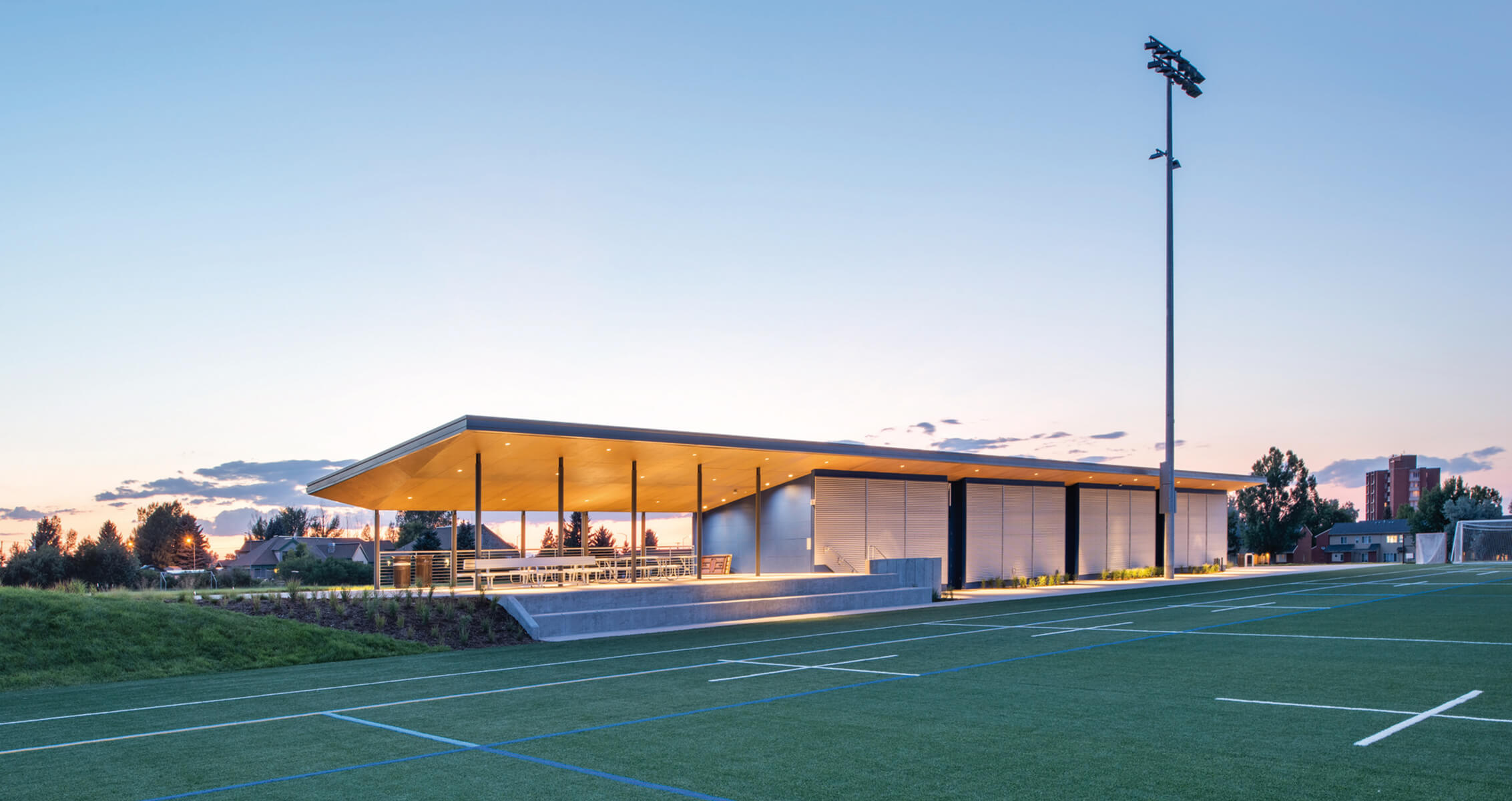
The field’s pavilion houses changing rooms and restrooms, training and first aid areas, and sports and maintenance storage. Complimenting the interior programs, a connected exterior canopy supports large gatherings and provides shade and shelter to students and spectators. The overall design is responsive to the natural environment, integrating the venue seating and structure into the landscape.
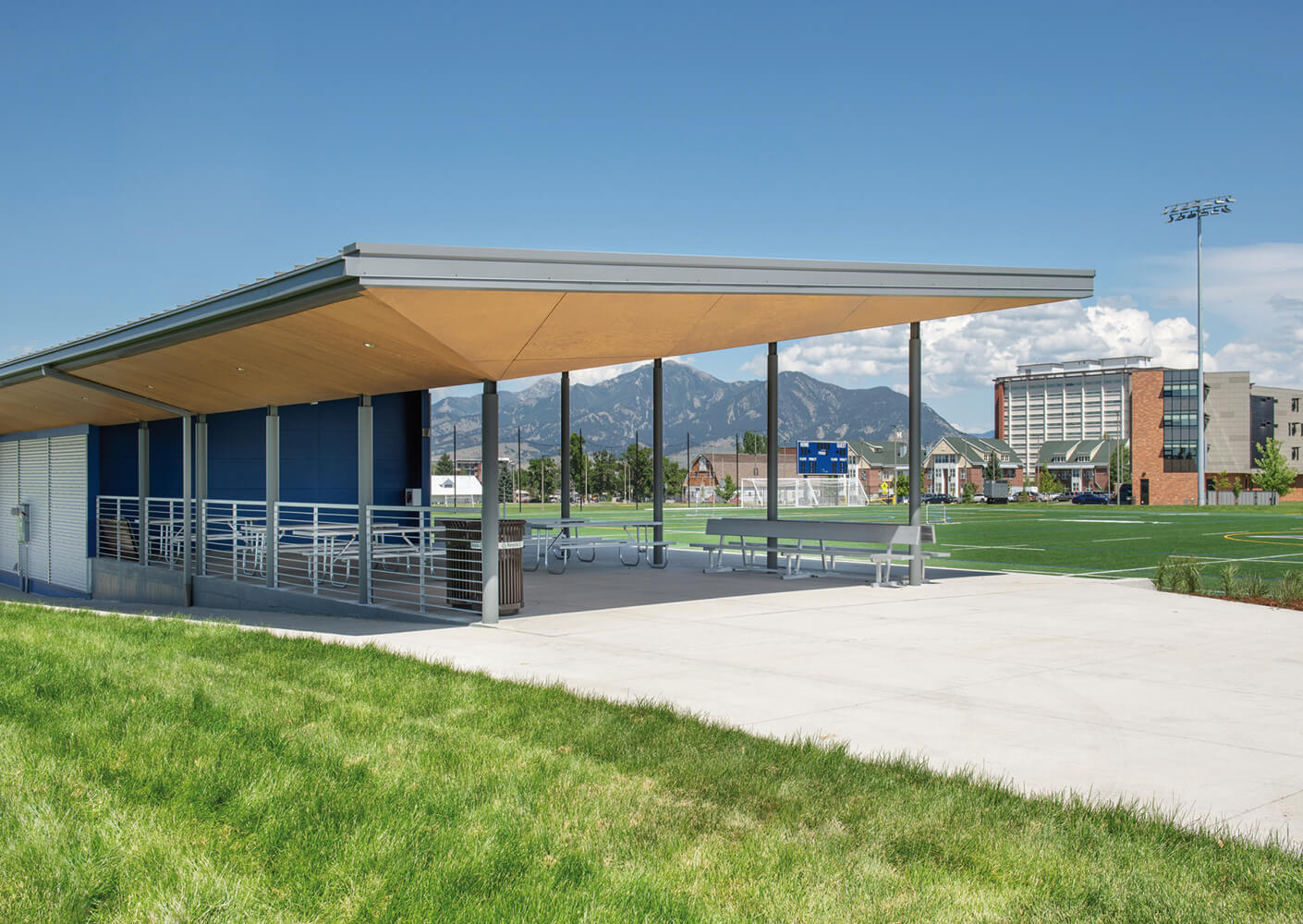

The artificial turf field requires zero watering needs and replaces 114,300 square feet of existing irrigated sod. This smart and sustainable choice significantly reduces water usage and maintenance costs. Integration of LED-based lighting technology concentrates light down to the field, reducing glare and light pollution. During practices and general public use, field lights can run at 60% capacity, saving energy and minimizing surrounding neighborhood impact.
